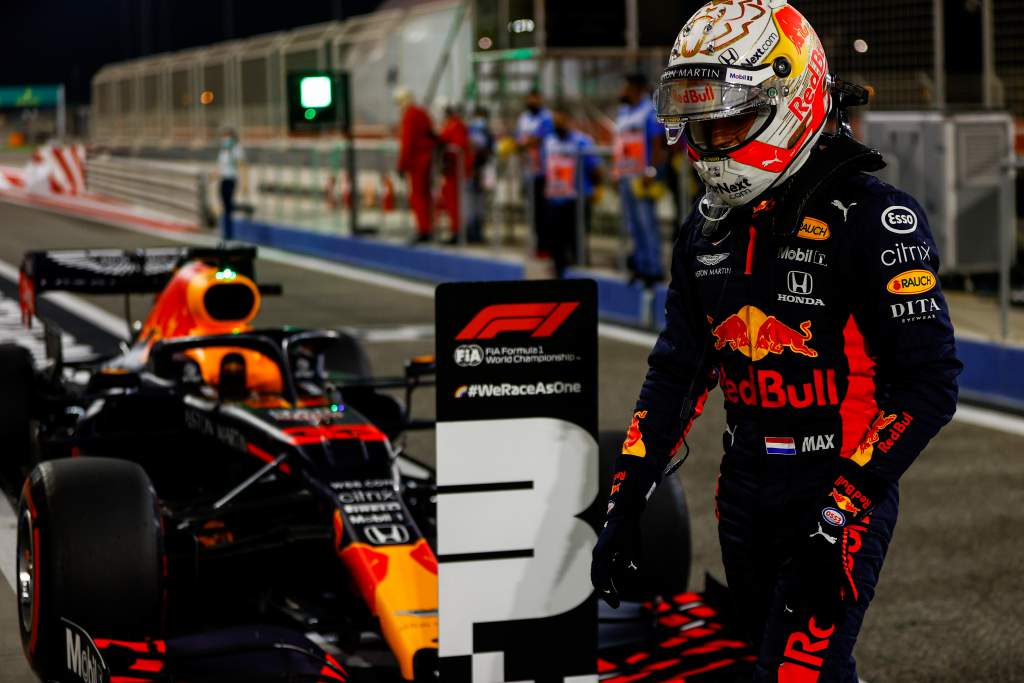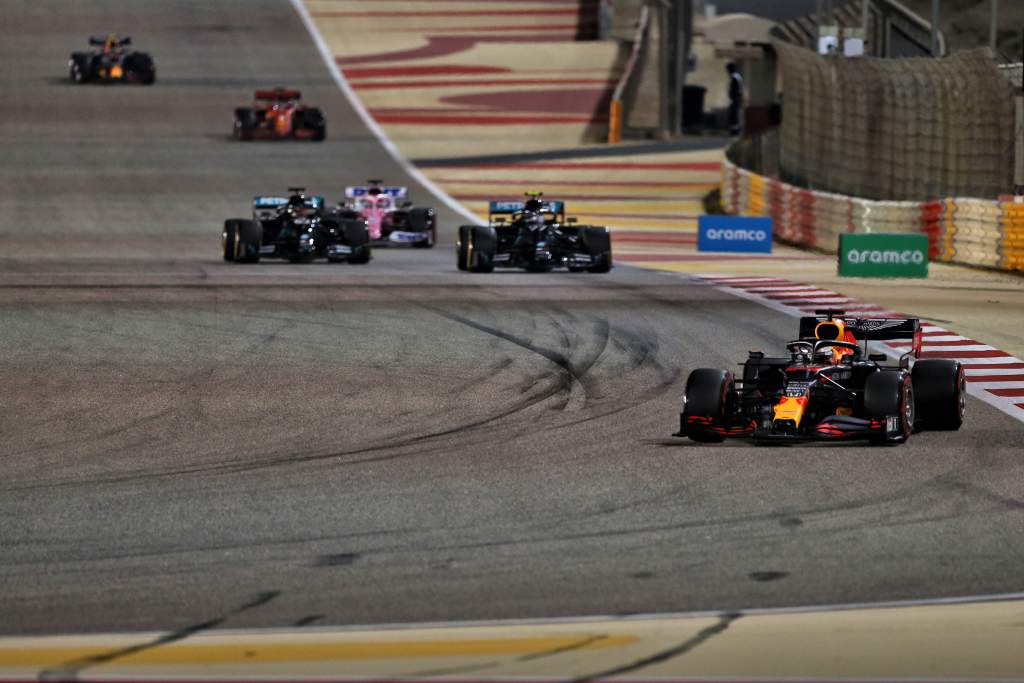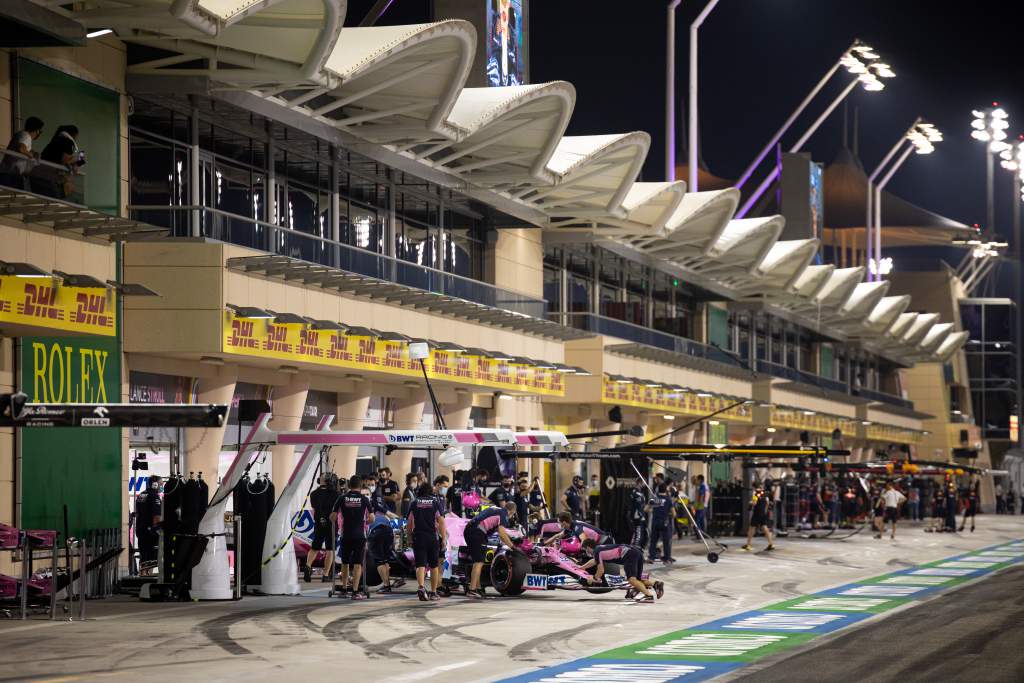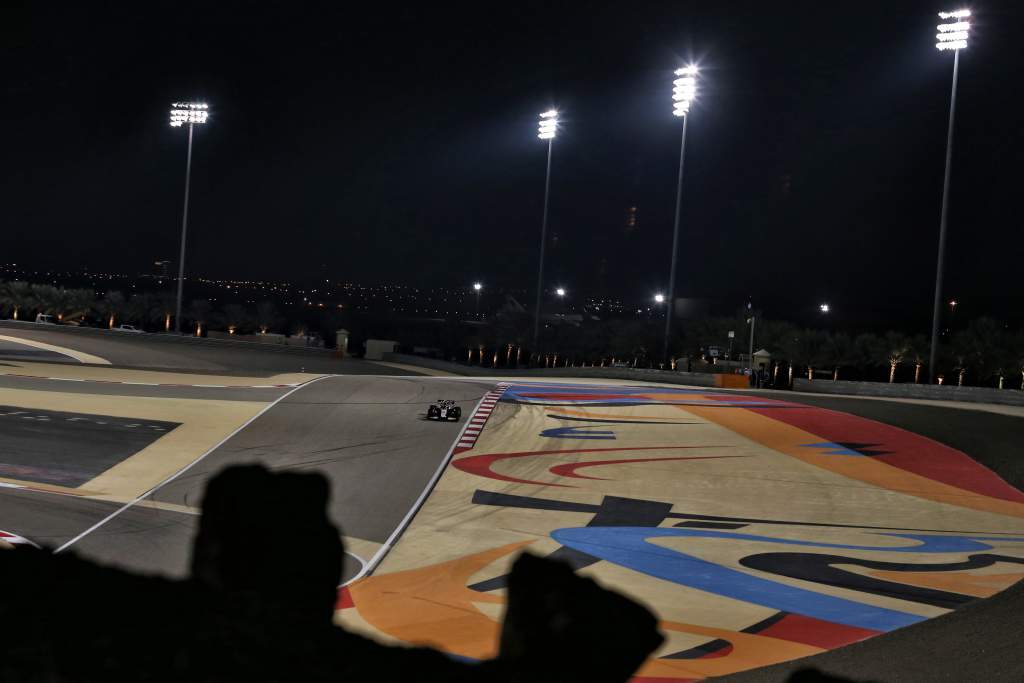There are plenty of questions to be answered in the first – and possibly only – grand prix using Bahrain’s short, sharp ‘Outer’ circuit configuration.
But practice and qualifying has at least partly answered some of them and has set the stage for what should be a gripping race.
The Race has picked out five key factors that will shape the race that will unfold over 87 laps.

The Red Bull challenge
The Red Bull was the fastest car on the long runs during Friday. Max Verstappen lapped an average of 0.4s faster than Valtteri Bottas’ Mercedes (second-fastest was Alex Albon). But Verstappen wasn’t quick enough to get through Q2 on the medium and thus has to start on the soft, rather than the mediums of the two Mercs ahead of him.
That, however, might just give him a vital advantage at the start, on gripper tyres and from the clean side. In that way, he can partly negate the advantage of the Merc’s greater range. With Albon out of the picture on account of failing to make Q3, Red Bull is potentially up against a Mercedes pincer movement and so the first-lap choreography between Bottas and George Russell could be absolutely crucial as one may inevitably be strategically compromised in the team’s attempt at countering Verstappen.
We don’t really know how Russell’s tyre usage is going to compare to Bottas’. Usually, Hamilton can get greater tyre life from the rubber than Bottas and that can be strategic gold gust. It seems unlikely Russell will be at that level of expertise on his first race in the car. Red Bull will definitely be sniffing opportunity here.

Bottas v Russell
Bottas is used to intra-Mercedes fights being settled with the run down to Turn 1. The difference at the Sakhir Grand Prix is for the first time his rival in that fight will be Russell.
Mercedes boss Toto Wolff says he doesn’t see “any rivalry within our team”, continuing to state the mantra that Bottas and Hamilton’s stand-in Russell are not in some sort of showdown for a future Mercedes seat.
“Valtteri is well-settled, there’s nothing to prove for him,” Wolff said. “For George, it’s a little bit easier because there is no pressure, he has nothing to lose.”
But Bottas vs Russell is an entirely new dynamic with a potentially long-lasting consequence, particularly if Russell emphatically gets one over on Bottas. And the race is primed to evaluate the theory because Russell’s excellent qualifying debut for Mercedes has netted a front-row start and Wolff has confirmed they are free to race.
It may not be gloves off into Turn 1, but with Verstappen attacking from third in the Red Bull it’s not exactly going to be pedestrian either.

Slipstreamer or DRS train?
Heading into this weekend, the hope was for a classic slipstreaming fest with overtaking galore. But the drivers aren’t so sure. In fact, the suspicion is that while the pack will likely not spread out too quickly, in the midfield at least, it will quickly form a DRS train where everyone has it available and nobody has the advantage.
“It’s not as easy to overtake as you’d possibly think,” says McLaren driver Carlos Sainz, who starts in the thick of that midfield bunch in eighth. “We saw a pretty exciting F2 race, but F2 races are always exciting. It looks very tricky to follow around Sector 2 because of the chicane, it doesn’t really allow you to follow the car in front very well. So it’s not as easy as maybe the track layout suggests, to overtake.”
Added to this, there are only two DRS zones thanks to the one on the straight leading to the final corner being removed. The drag-reduction effect is also slightly less powerful than during last weekend’s Bahrain Grand Prix because of the lower downforce levels being run throughout the field that led to the fastest speed in the speed trap being 14km/h faster than anything we saw last weekend.

Pitwall pressure
Even though the track is missing eight corners compared to last week, the tyres are still showing significant heat degradation in their performance.
The traction zones are ensuring the left rear is still taking a pounding and that’s defining how long the stints can usefully be before the tyre becomes just too slow not to change. So it will likely still be a two-stop race.
The undercut effect will be powerful, just as it was last week. This means a car pitting a lap earlier than its rival will gain a lot of time on new tyres on its out-lap as the rival makes their in-lap on rubber much slower. The calls on the pitwall are going to be even more pressurised than usual – as there is so much less thinking time before a decision has to be made. There may well be more strategic errors than at a normal race.

Blue-flag chaos
The short track layout means that, on average, there will be a car every 177 metres even if they’re spaced out equally round the circuit. This means traffic and plenty of it.
The challenge is twofold. For those at the front, there will be lots of cars to navigate and if there are no safety car interruptions, we are likely to see cars multiple laps down. That means minimising time loss and also using the advantage of picking up the DRS from backmarkers to help resist any attacks.
But for those at the back, it’s even more difficult. Usually, you would extend the first stint and try and delay hitting the blue flags and the resulting time loss but this lap is so short that it’s unlikely to work. For those who hit blue flags almost continuously, the time loss is going to be enormous.
“There’s going to be two rounds of blue flags for at least half of the field,” says Haas driver Kevin Magnussen. “We’ll certainly get lapped by almost everyone and then the first half will most likely lap us again, so that’s going to be a lot of blue flags
“If you are going to have 30 blue flags in a race, you lose at least a second and more I would say. So that’s 30 or 45 seconds that you lose in race time if you get all those blue flags. I don’t know if there’s a way around it.”





